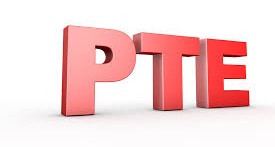
IELTS
The International English Language Testing System (IELTS) is the most sought after English language proficiency test. This test may be taken for a number of reasons like:
- Migration to English speaking countries such as Australia, New Zealand, Canada.
- Admission in Universities in countries that have English as their first language.
- For employment in the Communications/ Teaching field in English speaking countries.
Developed by the University of Cambridge Local Examination Syndicate, it is a globally accepted standardized test.
Kinds of test
There are two different IELTS test that one may be required to choose from depending on the need to take the test.
Academic: The Academic module is for candidates wishing to study at undergraduate or postgraduate levels, and for those seeking professional registration.
General: The General Training module is for candidates wishing t migrate to an English speaking country (Australia, Canada, New Zealand, UK), and for those wishing to train or study at below degree level.
The IELTS Exam Pattern
The International English Language Testing System (IELTS)
is the most sought after English language proficiency test.
Listening
Timing: Approximately 30 minutes (plus 10 minutes' transfer time)
Questions: There are 40 questions
A variety of question types is used, chosen from the following: multiple choices, matching, plan/map/diagram labeling, and form completion, note completion, table completion, flow-charts completion, summary completion, sentence completion, short-answer questions
Test Parts: There are 4 sections
Section 1 is a conversation between two people set in an everyday social context (e.g. a conversation in an accommodation agency)
Section 2 is a monologue set in an everyday social context (e.g. a speech about local facilities or a talk about the arrangements for meals during a conference)
Section 3 is a conversation between up to four people set in an educational or training context (e.g. a university tutor and a student discussing an assignment, or a group of students planning a research project)
Section 4 is a monologue on an academic subject (e.g. a university lecture)
Each section is heard once only
A variety of voices and native-speaker accents is used
Skills assessed: The purpose here is to assess wide range of listening and interpreting skills of a candidate using variety of techniques set in everyday situations.
Marking: Each correct answer receives 1 mark
Scores out of 40 are converted to the IELTS 9-band scale
Scores are reported in whole and half bands
Speaking
Timing: 11-14 minutes
Tasks: The Speaking test is a 3-part face-to-face oral interview with an examiner
The Speaking test is recorded
Test Parts: There are 3 parts
Part 1 Introduction and interview (4-5 minutes)
The examiner introduces him/herself and asks the candidate to introduce him/herself and confirm his/her identity. The examiner asks the candidate general questions on familiar topics, e.g. home, family, work, studies and interests.
Part 2 Individual long turn (3-4 minutes)
The examiner gives the candidate a task card which asks the candidate to talk about a particular topic and which includes points which the candidate can cover in their talk. The candidate is given 1 minute to prepare their talk, and is given a pencil and paper to make notes. The candidate talks for 1-2 minutes on the topic. The examiner then asks the candidate one or two questions on the same topic.
Part 3 Two-way discussion (4-5 minutes)
The examiner asks further questions which are connected to the topic of Part 2. These questions give the candidate an opportunity to discuss more abstract issues and ideas.
Skills assessed: A wide range of speaking skills is assessed, including the ability to communicate opinions and information on everyday topics and common experiences and situations by answering a range of questions; the ability to speak at length on a given topic using appropriate language and organising ideas coherently; and the ability to express and justify opinions and to analyse, discuss and speculate about issues.
IELTS scores are provided on a band of 1-9, with 1 meaning having no virtual knowledge of English and 9 meaning native English Speaker Proficiency. Universities in UK, New Zealand and Australia usually require a score of 6-7. However, it is always advisable to contact the University and find out their score requirement.
How to interpret IELTS
Test takers receive scores on a band scale from 1 to 9.
A profile score is reported for each skill. The four individual scores are averaged and rounded to produce an overall band score. Overall band scores and scores for each component (Listening, Reading, Writing and Speaking) are reported in whole bands or half bands.
Overall band score
Test takers receive a Test Report Form including or listing their overall band score and their sub-scores on each of the four components: Listening, Reading, Writing and Speaking.
Each of the component scores is equally weighted. The overall band score is calculated by taking the mean of the total of the four individual component scores.
Overall band scores are reported to the nearest whole or half band. The following rounding convention applies; if the average across the four skills ends in .25, it is rounded up to the next half band, and if it ends in .75, it is rounded up to the next whole band.
Thus, a test taker achieving 6.5 for Listening, 6.5 for Reading, 5.0 for Writing and 7.0 for Speaking would be awarded an overall band score of 6.5 (25 ÷ 4 = 6.25 = Band 6.5).
Likewise, a test taker achieving 4.0 for Listening, 3.5 for Reading, 4.0 for Writing and 4.0 for Speaking would be awarded an overall band score of 4.0 (15.5 ÷ 4 = 3.875 =Band 4.0).
On the other hand, a test taker achieving 6.5 for Listening, 6.5 for Reading, 5.5 for Writing and 6.0 for Speaking would be awarded band 6 (24.5 ÷ 4 = 6.125 = Band 6).






